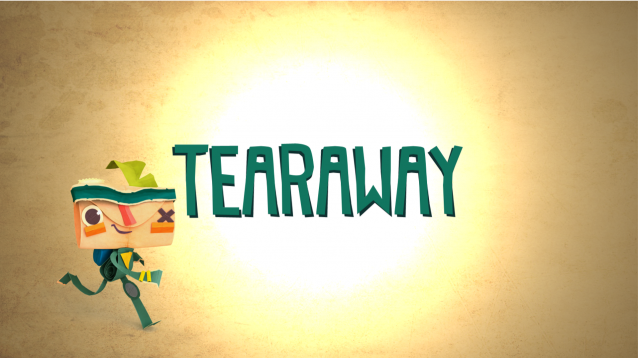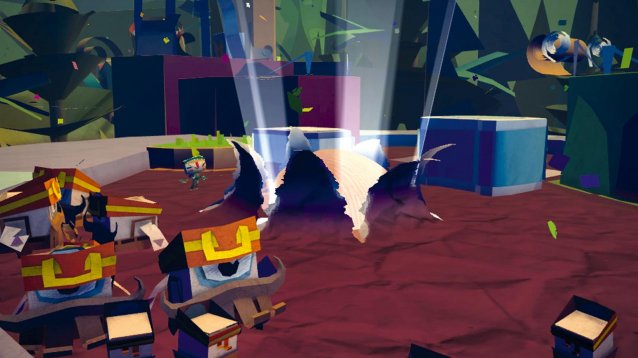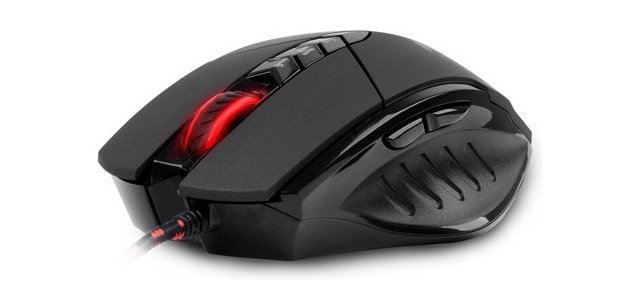


Tearaway wouldn’t be possible without the PlayStation Vita.
Sounds like a silly statement, right? Media Molecule’s portable project was built from the ground up with Sony’s latest handheld in mind, so it would only make sense that the existence of the Vita would be a requirement. However, the British developer didn’t simply aim to bring a home console experience to a mobile device like so many other creators in the past. Tearaway takes advantage of each and every unique feature that the Vita offers, and somehow, not a single swipe or tap of the finger feels like a gimmick. The cameras, touchscreen, touchpad, and microphone are all core pieces to the gameplay puzzle, and thankfully, this paper-craft platfomer manages to fold each layer of functionality into an adventure too charming to ignore.
What might be the most impressive element of Tearway is its pacing. Iota, the hero of the story who’s destined to deliver a very important message, is unable to jump when the game begins. His movement and offensive capabilities are limited, but that changes as You (yes, you reading this review) guide the customizable hero through his journey. The message Iota fights to deliver is addressed to the player, who acts as a god-like figure in the vibrant world. You can stick your fingers through paper-thin areas marked on the screen, beat a trampoline-like drum to lift Iota to new heights, and watch your face as it shines bright like the sun. The last part is a bit odd, but you can expect to see your unsuspecting mug all over the well-folded world – often used in less-than-flattering ways.
You, as a character in the game, have plenty of influence over the events that take place, yet Iota becomes more and more capable as the story progresses. The ability to jump at will, throw enemies into walls, and use a musical weapon that can both push and pull objects on screen all come into play over time, and the game’s patience with introducing these mechanics makes it easy to stay glued to the screen. Each subsequent area presents a fresh challenge inspired by new player and character functionality, leading to platforming that rarely, if ever, grows old.

That means that there’s plenty more to the jumping than just, well, jumping. You can peel back the paper coating of a platform to reveal a bouncy area for Iota to use, or press your fingers against the back of the Vita to stop the force of a waterfall long enough for your little messenger to cross a narrow ridge. You and Iota must work in harmony to traverse the many dangers of this wonderfully realized paper world, and while there’s not a great deal of challenge when it comes to timing jumps or finding an enemy’s weak spot, the sense of discovery that comes from each new segment of the game is almost unparalleled.
To stay consistent with the paper-craft presentation, Tearaway asks players to find and collect confetti scattered across the environment in order to unlock various aesthetic add-ons. The colorful currency can be exchanged for new eyes, mouths, and accessories to decorate both Iota and various quest-based characters encountered during the story, giving the mostly linear campaign a sense of personal agency. It all feels very reminiscent to Media Molecule’s past work – such as LittleBigPlanet – but there’s no great advantage to slapping a new smile on Iota’s face or placing a comically large pickle on his head. It’s good for a laugh, yet the thousands of pieces of confetti collected never feel that valuable.

Thankfully, you don’t need any arbitrary decorations to make Tearaway beautiful. This is a stunning handheld product that expertly intertwines players into every single glued edge and folded corner. It’s dazzling to see your fingertips tear through the thin material separating the real and paper worlds due to the sincerity of the characters and artifacts embed in the experience. The world is believable – in its own exceptionally improbable way – so ripping through pieces of the environment is a satisfying gameplay hook that enhances the standard jumping and enemy bashing. This is further punctuated by a toe-tapping soundtrack equally as magnetizing as its visual counterpart, with enough drum beats and folksy melodies to satisfy the many facets of Tearaway’s world. It’s an audiovisual experience like no other, and yes, it doesn’t hurt that it’s all being displayed on the Vita’s OLED screen.
It’s not easy to perfectly illustrate why Tearway’s imagery is so charming, how the Vita’s features are consistently incorporated without a hitch, or what about the mostly static characters made me want to continue exploring the world long after the credits rolled. This is a game that shines in motion, and while it didn’t take more than four or six hours to reach the end of Iota’s journey, the time I spent with this portable gem was truly a pleasure. Tearaway is the best Vita game out there, and one of the few pieces of software that’s in complete harmony with the system it’s being played on. There are two next-generation consoles that have just entered the market, but somehow, all I can think about is the vivid, interactive pop-up book that is Tearaway.
9.5 out of 10
A copy of the game was provided by the publisher for the purpose of this review.




 Platform Tectonics: Tools of the Trade
Platform Tectonics: Tools of the Trade NBA 2K14 Review: One of Next-Gens Must Haves
NBA 2K14 Review: One of Next-Gens Must Haves Tom Clancy's Splinter Cell: Conviction Walkthrough Guide
Tom Clancy's Splinter Cell: Conviction Walkthrough Guide A4Techs Bloody Gun3 V7 Gaming Mouse Review
A4Techs Bloody Gun3 V7 Gaming Mouse Review Dragon Ball XenoVerse How to: Piccolo Mentor Quest Guide
Dragon Ball XenoVerse How to: Piccolo Mentor Quest Guide